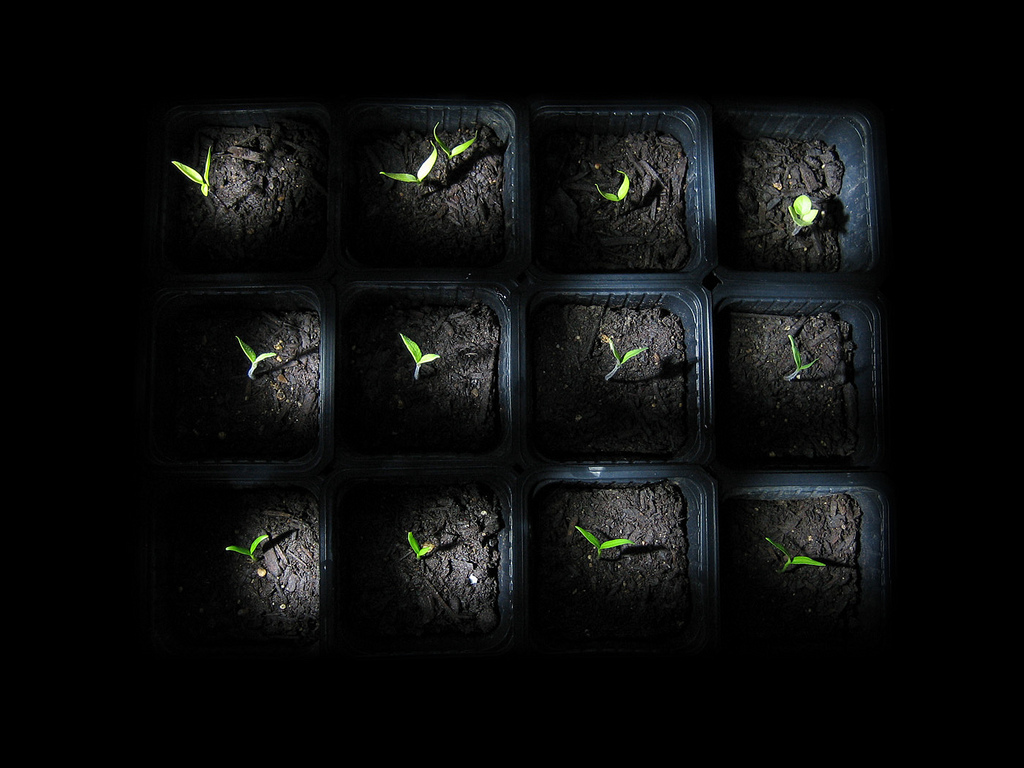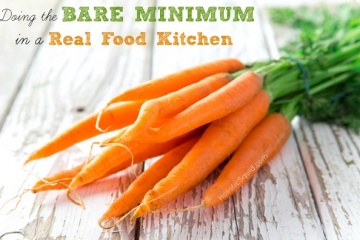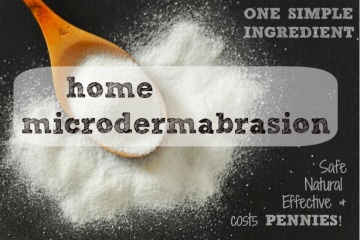
I cannot count the number of people I meet who are in awe by the things I make in my kitchen.
“You should teach classes,” some say.
“I could never do that,” others declare. (No, I'm sure your kitchen would be much less messy than mine!)
To these remarks, I find myself inwardly chuckling, thinking of my roots. As a teen I loved to prepare food – I would throw a slab of butter (the only health food in this tale) and a handful of marshmallows in a large bowl and microwave on high for a minute or so. Then I would pour the Rice Crispies into the pool of chemical sweetness until I had reach the desired consistency. Taking a utensil in hand I would afix myself to the TV for some Roseanne Barr and devour my creation. Other times I would empty the contents of a Mrs. T's Pierogi box (for those of you in the dark, a pierogi is a pasta pocket filled with mashed potatoes – in this case as fake and processed as they come) onto a plate, microwave on high, and smother with butter and fat-free sour cream. Yes, quite the chef.
If you've been reading my blog, you will know that I've recently listened to Joel Salatin's Folks, This Ain't Normal on my daily drives in and around Los Angeles. One of my favorite quotes of the book is the title of this post – “If It's Worth Doing, It's Worth Doing Poorly First.” Here's why…
As Salatin points out, the classic saying, “If it's worth doing, it's worth doing right,” can often lead us astray. Take cooking, for example.
As you can probably see, when I first set out on my own I could barely open a can, let alone prepare a meal with any nutritional merit. But the thrill of new-found independence had me motivated.
I was a junior in college living off campus in West Philadelphia. My mother had armed me with an electric rice cooker and a massive sack of white rice (lest I call her again to complain about starving). There was a tiny fruit and vegetable stand perched on the corner on my walk from class back to my house, and I remember the first time I purchased a small head of broccoli and two ears of corn. I brought them home and somehow managed to steam them both, cook some rice (with my mother's coaching), and add some butter, salt and pepper. I sat on my front porch eating my food, thinking that I had turned out a Cordon Bleu masterpiece.
What followed was years of flops and accidental successes. Still in college, with spaghetti sauce in mind, a friend and I would hit the veggie stand on Friday evenings and chop up so many veggies that when we finally dumped a jar of pasta sauce over them in a massive pot there was no more room for pasta. We doused our creation with (powdered) parmesan cheese and gobbled down. Later, as a vegetarian, I experimented with ‘meat' loaf from texturized vegetable protein and plenty of tofu dishes in the name of good health.
My husband loves to recant the memory of the first meal I ever made for him about eight years ago – lamb chops, tasteless and rubbery. Luckily I made up for it with neighborhood breakfast burritos (he lived in the apartment upstairs) and some decent meals since.
These days I can roast a chicken, make magic with a slow cooker or dehydrator, and saute up most things in a pan. That's not to say I don't burn things, over season, or turn out stringy yogurt or mushy sauerkraut on occasion. And I still find the precision and chemistry of baking intimidating, and prefer to stick with less ruinable dishes.
The point is, perfection is not a worthy goal when you are trying to turn out good food. Save perfection for the cooking channel where food is treated like a spectacular feat with perfectly dressed plates and immaculate countertop surfaces. While pretty is nice, I prefer food that is nourishing and yummy like a grandma's hug. Food like this doesn't come from culinary classes, it comes from years of trial and error – rubbery lamb chops and rice crispy treats in a bowl – as you gradually become the master of your own kitchen and your own nourishment.
I write this post not just for those who are intimidated by their kitchens, but as a reminder that the mantra “try and try again” applies to more that just preparing food.
One of my current classrooms: the garden experiment – my family's first attempt at growing food.
My confession: I killed my delicate little seedlings planted with the promise of gorgeous heirloom tomatoes in rich reds, yellows, and purples, fragrant basil, and bright marigolds.
Phooey.
How hard can it be to tend to a few flats of seeds? Well, as it turns out, the soil wasn't kept moist enough, and the tiny wisp-like sprouts shriveled in their egg cartons.
My frustrated voice of failure taunted me for even trying. “If you can't get it right, why even try?” It said. “You don't have time for this nonsense. Don't bother.”
On many notes, I agreed with my internal pessimist, until I remembered my rubbery lamb chops and this saying, “If It's Worth Doing, It's Worth Doing Poorly First.”
So with my head held high, I will try again. This time with a bunch of starts so I will have a better chance of a harvest in a few months. But I vow to plant some seeds again – next time with more moisture – so that perhaps in a decade or so, I may have learned the craft of growing my own food from seed.
What have you perfected by doing it poorly first?
Image Credit: Metor153












I killed my parsley & oregano seedlings.. hubby said I looked like I had lost a pet.. I guess I did.. I love my plants so much and was so excited.. 🙁 but on a brighter note my cilantro & potatoes are sprouting.. 🙂
My first attempt at a garden became a disaster last night as my seedlings got caught in a storm, thrown about my patio and was found by the dog who then trampled all over my little darlings. Will have to find out if I have enough time before the scorch of summer in Florida to try again. Thank you for the timely reminder that if it’s worth doing it’s worth learning from our failures. Maybe I should try that yogurt recipe again.
We killed our cabbage and brussel sprout seedlings.
Your inner gardener delights in your misfortune. Failure is guaranteed, and it’s how we react to it and what we do after it that defines our success. 🙂 Plus. your tomatoes should be fine as we live in Southern CA and it is almost a guarantee to grow healthy tomatoes!
love your post .:)
Good thing we don’t give up learning how to walk the first time we fall down – otherwise we’d all be crawling around or scooting about on our bottoms!
I too have a long list of things i have failed at, chicken comes to mind, first time i tried to make it, it was as dry as can be, and just retried starting sprouts for the garden, glad to know i am not the only one, and Heather, you have plenty of time to still plant in FL:), last year i didn’t even get my garden going until May!
Sourdough bread (and so many other things). It turned out like a brick at first and dh even ate it, bless him. Now it’s better than I ever thought it could be, better than any bread I ever bought at the store. And I only got from point A to B because it was worth doing poorly first. There’s truth in those words. Love Joel Salatin.
So much truth to this. Chicken was always the bane of my existence. ALWAYS turned out dry and tasteless, but now I can produce what I consider gourmet. I have let the coconut granola get moldy. Over-cooked the homemade yogurt. Burned the pot roast. First pot of bone broth ended up completely evaporating overnight and burned the chicken and vegetables to the pot. And that was a whole chicken, mind you. Not just leftover, boney chicken parts. Ah, the tales of a chef’s kitchen.
I don’t believe it, JoAnne. I’ve been in your kitchen, and I can’t imagine a disaster ever happening in there. 😉
Meat. It was almost a given at our place that I could turn any form of meat into rubber or leather without even trying. Thanks to reality tv cooking shows I’m able to turn out some edible meat now. I also failed with seeds in the egg cartons. Had way more success when I switched to using the rolls from inside the toilet paper. That way the roots can grow straight down without having to break through or wait for the bottom to break down. A lot of moisture also gets sucked out of the soil by egg cartons as they absorb more. Hope you get some good crops going!
Hi Yvette – I think you’re right about the egg cartons – they do suck the moisture out of the soil. I put my last surviving egg carton of seeds on the wet surface of my sink and they’re now doing great. I love the toilet roll idea. As for meat, I tend to stick with slow cooked cuts, it’s so much harder to turn them rubbery! Thanks for sharing. 🙂
Thanks for the inspiration (sigh of relief!). I would be the one saying in your kitchen, “I could never do that.” Hubby and I recently blogged about our failure (and success) at making our own apple cider vinegar. Feel free to check it out.
http://rojerthat.com/2012/04/04/homemade-organic-vinegar/
Thanks for sharing, Megan! Hearing about others’ successes and failures makes cooking so much more fun!
Thanks Emily. Heading toward winter now, so I plan doing more slow cooker meats. Would you believe I have rubberized some of those too!?
after 2 failed summer gardens, I finally got the hang of it, and last year even sold produce with a 3 family CSA from my backyard garden! Personally I like direct plating the seed in the ground. The only success I have had with seedlings was when my husband took them to work and took care of them in a greenhouse.